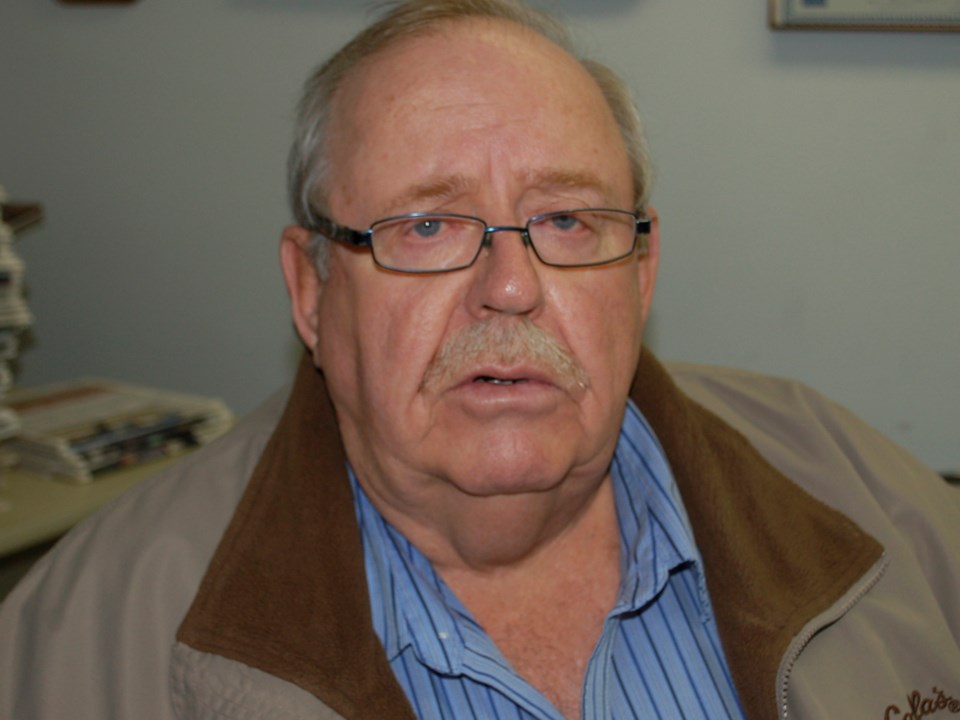He’s seen it all when it comes to dealing with drugs.
No, not in the way you’d first guess, but rather, Gary Tedford has seen and heard a lot while helping those who are addicted seek a path to recovery.
Tedford, the supervisor of addictions services for the Sun Country Health Region, along with many others, is observing Addictions Awareness Week this week.
The volume of addiction cases he and the other eight counsellors in the region have been asked to address has increased only slightly during the past two years, but “they are far more complex now. Several of these people will have accompanying mental health issues so it becomes Mental Health and Addiction Services,” Tedford said, referring to the official title in the local region.
The growth in popularity of designer drugs has increased pressure on the consultants and the health care systems that treat the afflicted.
“For example, crystal meth doesn’t usually surface in ‘have’ communities, but now that Estevan is becoming a ‘have not’ community for many, we get crystal meth as a problem now,” he said.
Oxycodone, fentanyl and ecstasy are a problem and you only add to that problem when other drugs come along that are disguised as one of these or some other conventional drug, he suggested.
Stack up the problems.
Tedford said they have lost some people as a result of designer drugs or their imitators and added they are not reported in significant volumes in the southeast, but with the changing economic times, anything could surface and probably will.
“Drugs are often mixed with something else, but you know, alcohol is still a primary element in substance abuse, either alone or mixed with something else,” Tedford explained.
The counselors can recommend a 28-day in-patient service to help an alcoholic or drug addicted victim, but often there are no beds available in the provincial facilities and the waiting list is usually four to six weeks. That is lamentable since “detoxification is designed for immediate response, and that’s rare now, it’s usually a wait of a week or more.”
Treatments and recoveries are sporadic and “we can’t be critical of outcomes because recovery is a process. Maybe they need more help, either with us or others, relapse is often a part of that process. It’s unfortunate, but true.”
Clients who arrive on the counsellor’s doorstep through a court order “aren’t always that motivated,” said Tedford with a grin. “They think they just need to give a good report to a probation officer and that’s it.”
But some do come to the realization they are on a hopeless trail so they will make a conscientious effort to get better. Those ‘tipping factors’ Tedford said, could be any number of things including mental health issues being addressed, family issues, medical intervention, police intervention, and so on.
Tedford was quick to praise the out patient (Community Health Services) at St. Joseph’s Hospital and their sister clinics in Weyburn and Kipling, as well as local police services.
“You know there is still a strong connection with the former St. Joseph’s addictions treatment centre they had on the fourth floor at the old hospital. There are still people in the local health care community who remember and worked with that program and understand the needs. Because they know what it’s about, they are very good at addressing the health issues.”
Measuring success or failure is “extremely difficult,” said Tedford, since post-treatment follow-ups are a bit of a gamble. “One week, four weeks, four years sobriety or off drugs … does that mean success? It’s not if you fall off the day after you’ve been contacted. Also, many people we’ve dealt with are very difficult to track down on a regular basis. So I question any agency that claims they have a success rate of 60 or 80 per cent or something like that. It’s an ongoing recovery process.”
There is no real pattern for veteran counsellors like Tedford. Talking with the client/victim will provide them with a path whether it be Narcotics Anonymous or Alcoholics Anonymous. Family members will struggle with the addiction issues too and that’s where Al-Anon can come into play, he said.
“Of course there is a stigma attached to it all; and, I wish we could get beyond that. It’s an illness, a diagnosable medical issue, let’s treat it that way. Small communities like ours can provide support networks because we know people who know people who can help.”
Some people can just quit drugs or booze, as they say, ‘cold turkey’ while others seek assistance from trained counsellors and Tedford admits, “we’re not the be all and end all for some. Substance abuse to addiction is a pretty thin line and once you realize it, you’re probably already addicted.”
Youth counsellors have done a great deal of positive work within high schools in Estevan and Weyburn. Sessions on awareness are a regular feature and additional information is provided at the discretion of the student and counsellor. An outreach program to the more rural schools is available and sessions may include a group of students or can be an individual session. Tedford said that with teenagers experimenting with drugs at an earlier age, there is a need to get the correct information to them in a timely manner.
“To many victims, they see the substance as a solution, not a problem. It helps them overcome shyness, guilt, shame. Because booze or drugs will, they think, take the negativity away. They learn too late, it doesn’t. We help them weigh the options for recovery. It’s heartening to see industries getting on board, making drugs and alcohol awareness part of their safety workshops; if everyone takes it seriously, we can make progress.”



